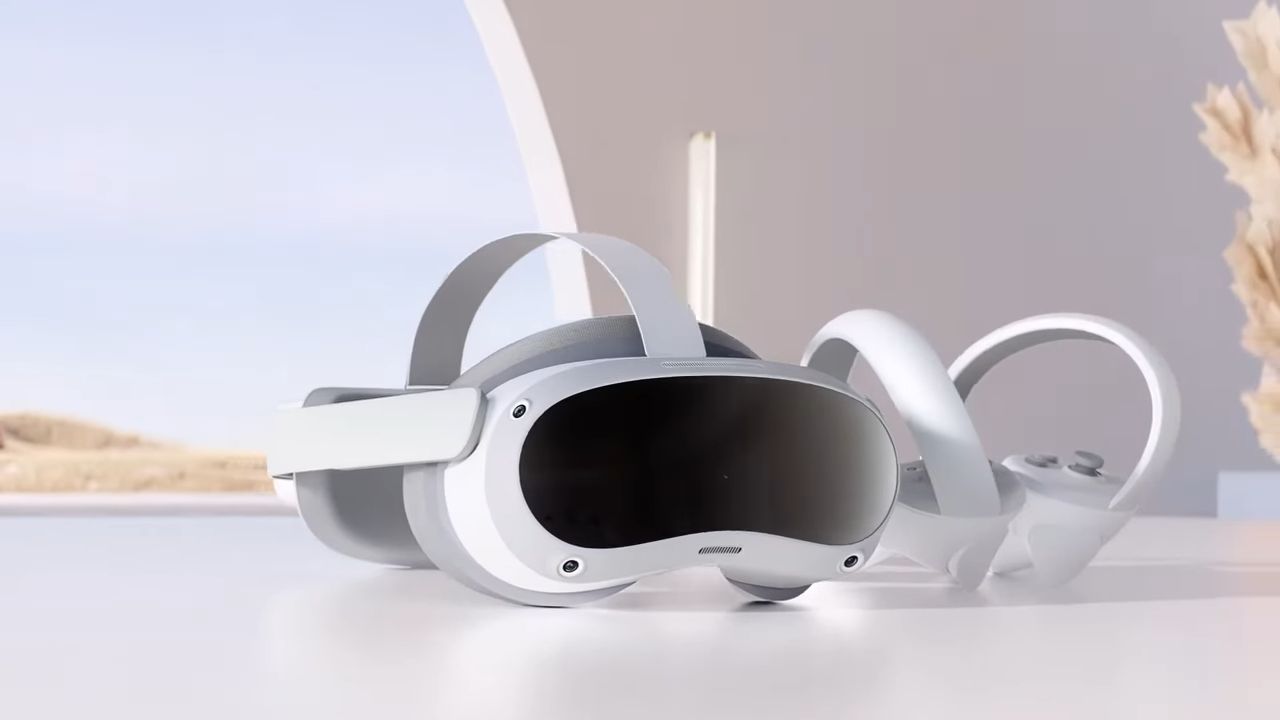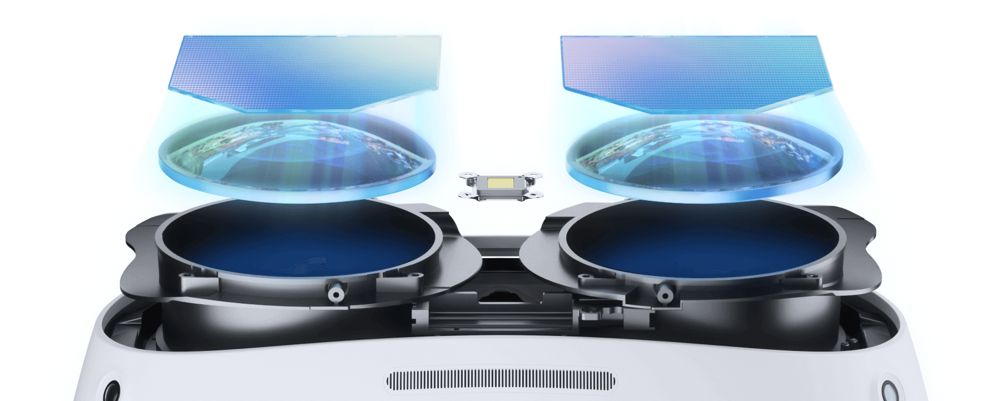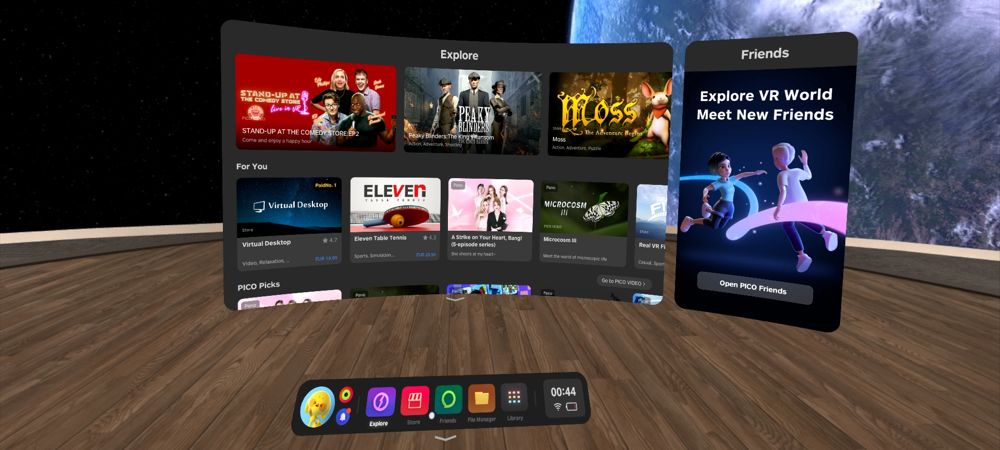A few months ago, the PICO 4, which we will talk about in this review. It is perhaps about the first true antagonist for Oculus Quest 2, which has already built a very solid reputation among users. To us, the PICO 4 seemed right away a good alternative to the product of Meta. But, exactly, what can a PICO 4 offer us for our virtual experience?
The PICO 4 review
We immediately admit that this, of the PICO 4, it was not a simple review. Not because of the viewer, which, let’s say it right away, we liked it a lotbut because of the market. This is a moment in which, thanks also to the spring of the metaverse, many companies are proposing their viewers for virtual reality. All these products, necessarily, experience new features (sometimes on our skin) for bring innovation and try to beat the competition. When there is an already established brand behind it, one can be quite conservative; otherwise, you need to risk a little more. The difficulty, in this case, is to succeed distinguish between innovation to create hype and innovation that actually benefits the user. PICO has, in all fairness, proven to place itself in the second case.
PICO XR is not the newcomer; Indeed. the viewer that we see in this review, it is not the first model that the company offers to the public. And this already, at least for some, it’s already reassuring. Were made a series of technical choices in our opinion very interesting and on the market the product is placed, in our opinion, well. Clearly the main competitor with which PICO 4 is confronted is Oculus Quest 2, and the thing is quite evident. However, even if right now everyone considers him the main threat in the market for Meta’s productis according to us still a little early to sum up. There are many variables that contribute to the success of a device; and its technological equipment is just one of them. Therefore, much of the story has yet to be written.
Meanwhile, waiting to see what will happen, what we can do is understand what kind of device the PICO 4 is, to decide if it’s the one for us or not.
The technical characteristics
When dealing with this type of device, hardware-wise it is basically played on two fronts: the quality of the optics and the movement sensors. The rest of the hardware is technology that we also find elsewhere and then there is the software. The software can always be improved or fixedbut if we see badly or we can’t interact well with the environment, there’s little you can do.
On both counts, the PICO 4 try to raise the bar than what is already available.
Optics
From a visual point of view we have a display with a 4320 x 2160 resolution (that is to say 2160 x 2160 per eye) with a frequency of refreshes up to 90Hz. Technically better than the competition, although in all honesty, with the applications available today, it takes a fairly trained eye to see the improvement. As for the optics, the lenses in front of the panel are from pancake type (rounded) instead of the more common Fresnel type (knurled in concentric circles). This should technically allow you to widen the field of view and reduce chromatic aberrations. The field of view of the PICO 4, in fact, is about 15 degrees wider of its predecessor and the Quest 2.
That said though, in more practical terms, how does it look inside? We feel like saying Very good; we found them very sharp images and individual pixels become visible they are in a bit extreme condition, as in the case of very thin and highly contrasted diagonal lines. We have to report some small perspective aberration in the suburbs, but nothing that could spoil the user experience. The thing that, unfortunately, we were a little disappointed about is that the colors we seem to have a tendency to darken and desaturate slightly. In general, we have noticed some dark scenes compared to other viewers, but we don’t know whether to attribute them to the panel or to the different shape of the lens.
sensors
The PICO 4 is equipped with latest generation 6DoF sensors which, in English, is an acronym for “six degrees of freedom”. A infrared positioning system allows you to determine the position and inclination of the headset, as well as the relative positions and inclinations of the two controllers with respect to the headset.
In use, these sensors have proven themselves extremely accurate and reliableto the point that we managed to manipulate objects with extreme precision.
Technically, the headset’s sensors can also track bare hands, without using the controllers. We say technically for two reasons. The first is that hand tracking must be enabled from a developer menu. The second is that, as far as we know and at the time of writing this PICO 4 review, no market application seems to support direct hand tracking. Enabled the option, however, we have experienced that it is a feature still under development so, for now, still not very precise. However, We look forward to the final versionbecause it will make this viewer make a clear leap in quality.
Ergonomics and usability
The material of the headset and controllers, just take them in hand, it is of excellent quality. Also from the point of view of structural soundness we were satisfied. Even though everything is held together by the side bands alone, we have never had any fear of it getting damaged.
Wearing the headset, however, is one somewhat mixed experience. In the sense that we have observed aspects both pleasant and not. Numerically, the former are in the majoritybut it is also true that their relative importance is a very personal thing.
What we found convenient
The viewer is generally comfortable to wear and the padding didn’t bother our skin. Even, and we didn’t expect this, it adapts well even to very large heads; and without even the need to be stretched to the max. Audio (stereo) is sourced directly inside the support rods; we found it by good quality, also regarding the 3D effect of spatialization. Note the sound it is also perceived by those around usso some may prefer Bluetooth headphones, which can be paired directly from inside the headset.
A detail that we really liked, however, is the presence of a small ventilation fan located in the front area. In practice, there is a gentle stream of fresh air which is kindly sent to us just above the nose. This air has two functions. On the one hand, prevents the lenses and/or glasses from fogging up during use; on the other, it helps to keep motion sickness under control a little more (motion sickness). In fact, among the various advice given to those who suffer greatly from motion sickness, there is that of pointing a fan at you during game sessions. This little fan has made a big difference to some of the editorial team.

What we found inconvenient
For what has been our experience, we have found it the eye chamber is a bit uncomfortable for two reasons. The first is that the underside of the padding doesn’t fit the nose particularly well. This is evidently intended to allow air to circulate inside the headset; however, the price to pay is that some light filters in from below; so, sometimes, the immersive effect is ruined. The problem is however easy solution, because just dim the lights in the room. The second aspect that has left us a little more perplexed is that there is not much space between eye and lens; therefore, eyeglass wearers may find this uncomfortable. To make sure you don’t scratch anything at the end, we opted to use the PICO 4 without glasses and, at least with our visual impairments, thee experience was just as pleasant.
Autonomy
The headset charges with a any 5 Volt power supply using a USB-C cable. A full charge takes about a couple of hours. The autonomy in use obviously varies depending on what we do during the game session, but the average that we have observed is about three hours. Sometimes even three and a half hours.
Even on this aspect, however, there is something that has left us a bit perplexed: the headset is rechargeable, but the controllers use AA batteries. We could not understand this choice very well. Surely, having three items to reload at the same time can be complex because you need three power supplies, or a multiple one, and three cables. However, with all the talk they make today regarding sustainability and the reduction of pollution, a different solution would not have been bad.
The software catalog
The PICO market obviously resents the fact that he is still quite young. In our opinion, however, it would be incorrect to compare it with one of the other marketplaces, which have been fed with games and applications for years. What we feel like observing is that the PICO marketplace may not yet have a huge catalogue, but the titles we have found there are all quite interesting and, in some cases, even porting of successful stuff, such as Moss. Therefore, maybe it’s not yet as developed as others, but We see great potential.
Let’s not despair though, because PICO 4 supports…


















Leave a Reply
View Comments